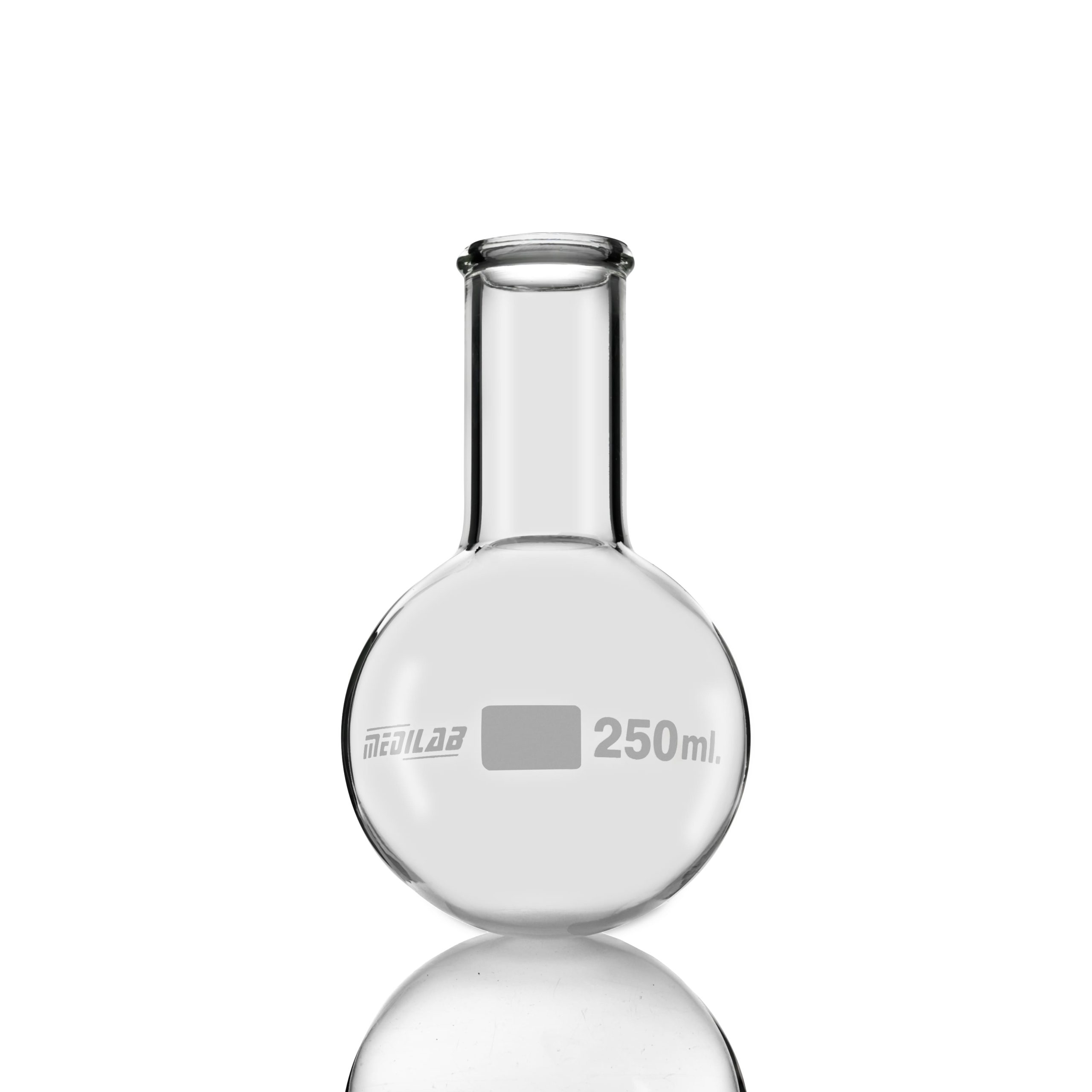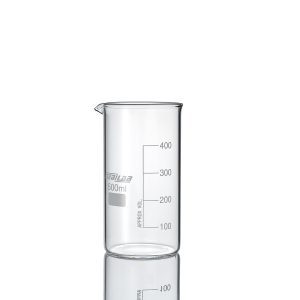Description
| Catalog No. | Capacity ml | Body Dia. | Neck Dia. | Height mm |
| 11005/1.1 | 25 | – | – | – |
| 11005/1 | 50 | 51 | 26 | 90 |
| 11005/2 | 100 | 64 | 26 | 110 |
| 11005/2.1 | 150 | 74 | 28 | 118 |
| 11005/3 | 250 | 85 | 34 | 143 |
| 11005/4 | 500 | 105 | 34 | 168 |
| 11005/5 | 1000 | 131 | 42 | 200 |
| 11005/6 | 2000 | 166 | 50 | 240 |
| 11005/7 | 3000 | 185 | 50 | 260 |
| 11005/8 | 5000 | 223 | 50 | 305 |
| 11005/9 | 10000 | 279 | 65 | 380 |
| 11005/10 | 20000 | 350 | 75 | 510 |
The MEDILAB Round Bottom Narrow Neck Flask is a precision-crafted laboratory vessel designed for heating, boiling, distillation, and chemical reaction processes. Its spherical body ensures uniform heat distribution, while the narrow neck supports secure sealing, controlled evaporation, and safe handling. An essential tool for chemistry, pharmaceuticals, biotech, and research labs, this flask provides dependable performance under demanding laboratory and industrial conditions.
Key Features
- Uniform Heating Performance: Round-bottom design ensures even thermal distribution, minimising hot spots during heating and reflux operations.
- High Chemical Resistance: Suitable for acids, solvents, alkalis, and organic reagents without leaching or degradation.
- Heat Shock Resistant: Withstands rapid temperature changes, making it ideal for heating, cooling, and autoclaving.
- Narrow Neck Design: Allows secure fitting of stoppers, condensers, and adapters for distillation and synthesis setups.
- Precision Manufacturing: Produced with consistent wall thickness for accuracy, strength, and long operational life.
- Leak-Proof Fit: Compatible with standardised joints and rubber stoppers for safe experimental setups.
- Durable Laboratory Construction: Scratch-resistant, easy to clean, and designed for repeated heating cycles.
Material Specifications
- Material: High-grade Borosilicate Glass 3.3
- Thermal Properties:
Low thermal expansion coefficient (~3.3 × 10⁻⁶/K)
Withstands temperatures up to 400°C (continuous use)
High thermal shock resistance as per ISO 3585 - Chemical Resistance: Excellent resistance to corrosive chemicals, solvents, and biological reagents
- Mechanical Strength: Robust construction with high impact tolerance
- Compliance: Manufactured according to relevant ISO, DIN, and ASTM glassware standards for laboratory use
Technical Specifications
- Available Capacities: As per the standard size table
- Dimensions: Diameter, height, and neck size vary according to capacity. Standard tolerances apply as per international laboratory glassware norms.
- Accuracy/Tolerance: All flasks are produced with controlled wall thickness and dimensional accuracy suitable for heating and reaction work.
- Joint/Neck Options:
Narrow neck with plain mouth
Optional ground joint (on request) - Accessories (Optional):
Rubber stoppers
Glass stoppers
Condensers and adapters compatible with the narrow neck
Stands, clamps, and heating mantles
Handling & Precautions
- Safe Use: Always support the flask using clamps or heating mantles during heating procedures.
- Heating: Do not expose directly to an open flame unless supported with a proper setup. Recommended for use with heating mantles, oil baths, or sand baths.
- Autoclaving: Fully autoclavable at standard sterilisation temperatures.
- Cleaning: Use non-abrasive detergents; avoid sudden temperature shifts during washing to prevent thermal stress.
- Dos:
Inspect for chips or cracks before use
Preheat gradually
Store in padded stands or racks - Don’ts:
Do not subject to mechanical shock
Do not heat an empty flask
Do not use incompatible stoppers or oversized clamps
Applications
- Chemical synthesis, reaction setups, and sample preparation
- Heating, boiling, evaporation, and reflux operations
- Distillation and fractionation processes
- Pharmaceutical formulation, QC/QA testing, and R&D
- Biotech and microbiology sample processing
- Academic laboratory experiments and industrial research workflows
- Suitable for organic chemistry, analytical chemistry, and general lab use
The Round Bottom Narrow Neck Flask plays a critical role in routine laboratory work where controlled heating and uniform thermal distribution are essential.







